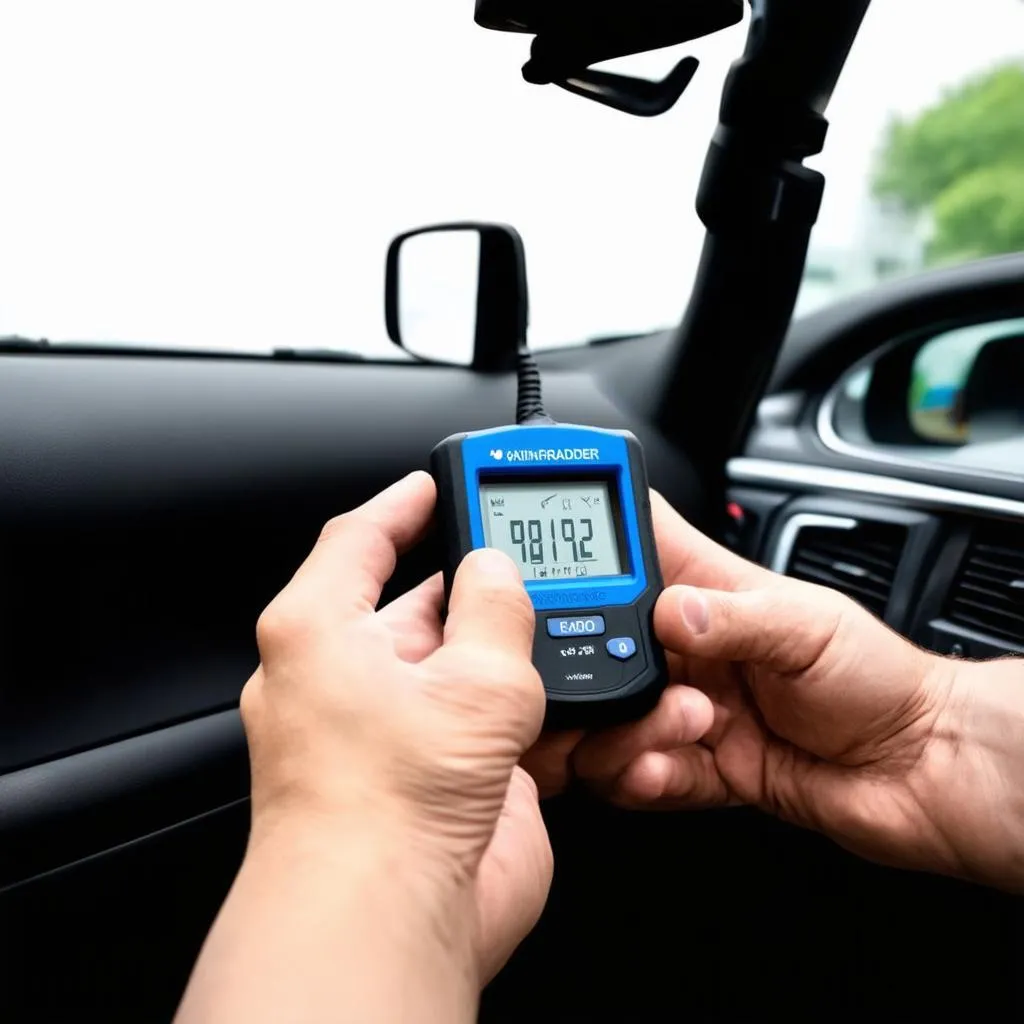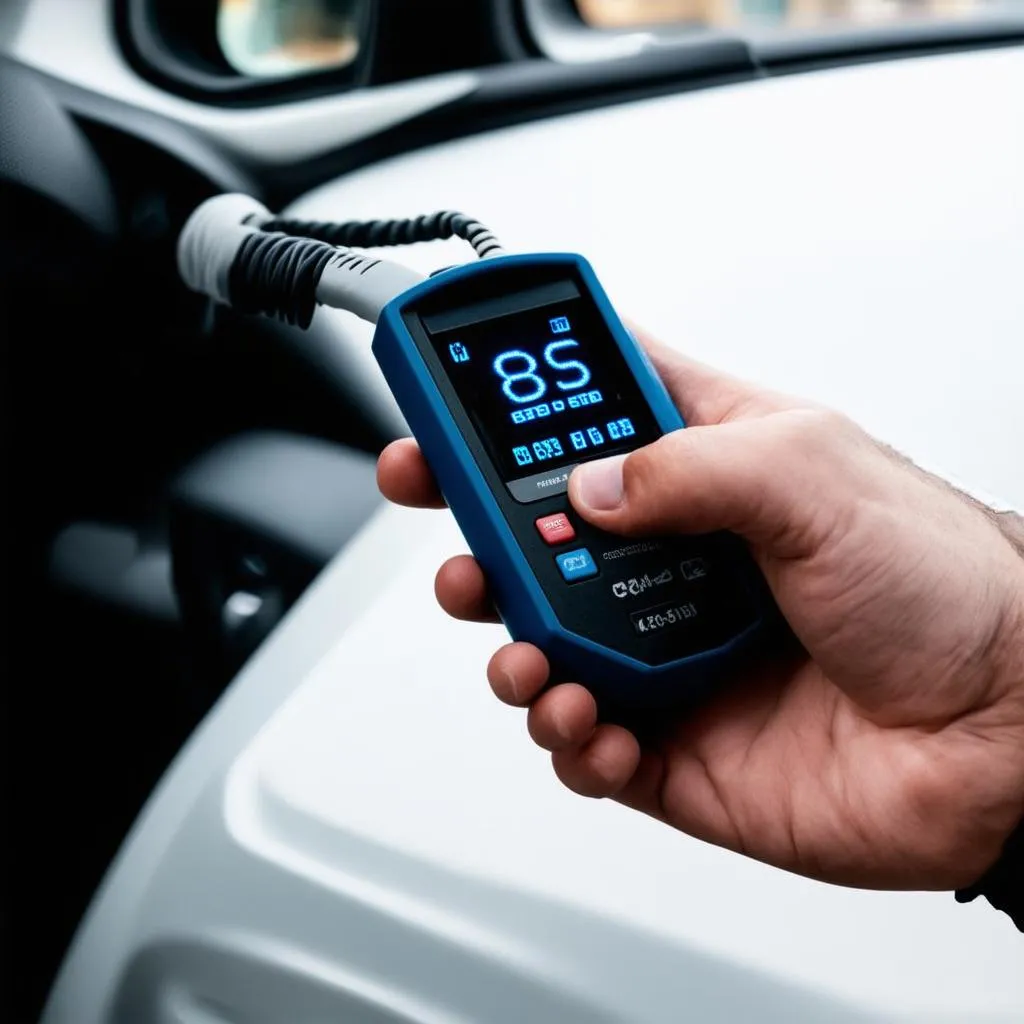Have you ever wondered what’s happening under the hood of your car? Or maybe you’ve experienced the dreaded “check engine light” and want to understand what it’s trying to tell you. A good OBD reader can be your best friend in these situations, providing insights into your car’s performance and helping you diagnose problems before they become major headaches. But with so many OBD readers on the market, how do you choose the best one for your car? Let’s delve into the world of OBD readers and discover the best option for your automotive needs.
Understanding OBD Readers and Their Importance
An OBD (On-Board Diagnostics) reader is a device that plugs into your car’s diagnostic port, usually located under the dashboard, and allows you to access and interpret information from your vehicle’s computer. It acts as a translator, bridging the gap between your car’s internal language and the one you can understand.
Why are OBD readers so important?
For DIY Mechanics: OBD readers are essential tools for anyone who enjoys tinkering with their car. They empower you to diagnose problems, clear codes, and monitor performance metrics, giving you the confidence to handle minor repairs yourself.
For Saving Money: OBD readers can help you avoid expensive trips to the mechanic by allowing you to troubleshoot basic issues, such as a faulty oxygen sensor or a clogged catalytic converter.
For Safety and Peace of Mind: OBD readers can provide vital information about your car’s health, helping you identify potential problems before they lead to breakdowns or accidents.
Navigating the World of OBD Readers: Key Features to Consider
Now that we understand the importance of OBD readers, let’s explore the different types and features you should look for when choosing the right one:
1. Compatibility
The First Step: The most crucial factor is compatibility. Make sure the OBD reader you choose is compatible with your car’s make, model, and year. Many OBD readers support all vehicles manufactured after 1996, but some models may have limitations, especially for older or European cars.
Tips for Checking Compatibility:
- Check the manufacturer’s website: Most manufacturers list compatible vehicles on their website.
- Consult online forums: Search for forums specific to your car model and ask for recommendations.
- Look for “OBD2” or “SAE J1962” compatibility: These standards ensure compatibility with most vehicles manufactured after 1996.
2. Functionality
Beyond Basic Code Reading: While basic OBD readers can read and clear diagnostic trouble codes, advanced models offer additional functionalities, such as:
- Live data streaming: View real-time data from your car’s sensors, like engine speed, fuel consumption, and coolant temperature.
- Performance monitoring: Track acceleration, braking, and other performance metrics.
- Fuel economy tracking: Analyze your driving habits and identify areas for improvement.
- Vehicle customization: Adjust your car’s settings, such as engine performance, suspension, and even the color of your dashboard lights.
3. Interface
User-Friendliness is Key: The interface plays a significant role in how easy it is to use an OBD reader. Consider the following:
- Display size and clarity: A larger, brighter display is essential for easy readability, especially in direct sunlight.
- Intuitive navigation: A straightforward menu structure and simple button controls make navigation a breeze.
- Multilingual support: Look for support for your preferred language for seamless operation.
4. Wireless Connectivity
Convenience at Your Fingertips: Wireless OBD readers offer convenience and flexibility. They typically connect to your smartphone or tablet via Bluetooth or Wi-Fi, allowing you to monitor your car’s data remotely.
Benefits of Wireless Connectivity:
- Remote access: Check your car’s data from anywhere within range.
- App support: Many OBD reader apps provide additional features, such as data logging, reporting, and customization.
5. Additional Features
Extra Perks for an Enhanced Experience: Look for additional features that can enhance your experience, such as:
- Battery life: Consider the battery life of wireless OBD readers.
- Durability: Choose a reader made from high-quality materials that can withstand the rigors of use.
- Warranty: Look for a warranty that protects your investment against defects.
Finding the Best OBD Reader for Your Needs
Choosing the Right Tool for the Job: The “best” OBD reader depends on your individual needs and preferences. Here’s a breakdown of some popular options:
For Basic Troubleshooting and Code Reading: Consider an entry-level, wired OBD reader for reading and clearing diagnostic codes.
For Advanced Monitoring and Customization: Explore a more feature-rich OBD reader with live data streaming, performance monitoring, and vehicle customization features.
For Convenience and Remote Access: Choose a wireless OBD reader that connects to your smartphone or tablet via Bluetooth or Wi-Fi.
Expert Tip:
Dr. Emily Carter, renowned automotive engineer and author of “Unlocking Your Car’s Secrets,” suggests: “Choosing the right OBD reader depends on your experience level and needs. For basic tasks, a simple, affordable model is sufficient. However, for advanced monitoring and customization, investing in a more advanced reader is worthwhile.”
Common Questions About OBD Readers
Let’s Address Your Queries:
Q1. Can I use an OBD reader to reset my check engine light?
A1: Yes, most OBD readers can clear diagnostic trouble codes, including those that trigger the “check engine light.” However, simply clearing the code doesn’t necessarily fix the underlying issue. It’s essential to address the root cause to prevent the code from recurring.
Q2. What’s the difference between an OBD reader and a scan tool?
A2: OBD readers are typically simpler devices that focus on reading and clearing codes. Scan tools offer more advanced features, such as live data streaming, bi-directional communication with the car’s computer, and the ability to reprogram certain vehicle settings.
Q3. Can I use an OBD reader to tune my car’s engine?
A3: While some OBD readers offer basic performance tuning options, a dedicated tuning device or professional tuner is recommended for more advanced engine modifications.
Q4. What are some popular OBD reader brands?
A4: Popular OBD reader brands include:
- Autel: Offers a wide range of OBD readers with varying levels of functionality.
- BlueDriver: Known for its user-friendly interface and comprehensive app support.
- ANCEL: Offers affordable OBD readers with solid performance.
Q5. Is it safe to use an OBD reader?
A5: When used properly, OBD readers are generally safe. However, it’s essential to choose a reputable brand and follow the manufacturer’s instructions to avoid potential issues.
Additional Tips for Choosing the Right OBD Reader
Making an Informed Decision:
- Consider your budget: OBD readers range in price from under $20 to over $100, so set a budget before you start shopping.
- Read reviews: See what other users have to say about the OBD reader you’re considering.
- Compare features: Compare different models and their features to find the best value for your money.
 Choosing the right OBD reader
Choosing the right OBD reader
The Bottom Line: Empowering Your Automotive Journey
OBD readers are powerful tools that can help you understand your car better, troubleshoot problems, and potentially save money on repairs. Whether you’re a seasoned DIY mechanic or just want to keep an eye on your car’s health, an OBD reader can be a valuable addition to your automotive toolkit.
Ready to unlock the secrets of your car? Explore the world of OBD readers and find the perfect one for your needs. And if you have any questions about choosing the right OBD reader or need help with diagnostics, don’t hesitate to reach out! We’re here to help you keep your car running smoothly.
Contact us via Whatsapp: +84767531508 for 24/7 support!
Please share your thoughts and experiences in the comments below!
Explore more helpful resources:
- Best OBD Code Reader Scanner
- Amazon Best Selling OBD Reader
- Best OBD Readers
- Best OBD Reader App for Android
- Best Car OBD Reader for Honda Budget
 Using an OBD reader
Using an OBD reader
 Benefits of using an OBD reader
Benefits of using an OBD reader